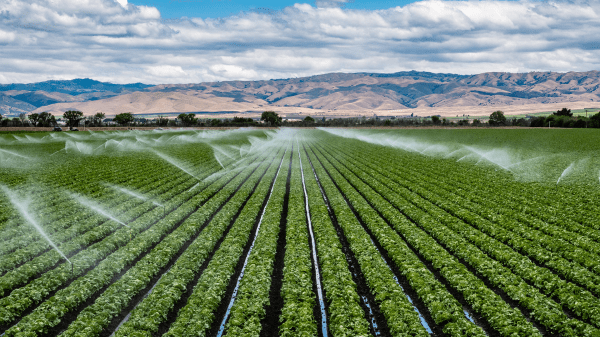The New York Times is no doubt aiming for a Pulitzer with its multi-article series on groundwater use in America.
Personally, I have found the articles extremely informative. (Dairy operations replacing potatoes in Idaho?!)
Major areas of groundwater depletion include California’s Central Valley and the western Great Plains.
The installment most relevant to the produce industry is on central California’s Pajaro Valley.
The Pajaro Valley has a problem to some extent shared by the Salinas Valley to its southeast: because of its proximity to the Pacific, groundwater depletion leads to saltwater intrusion from the ocean—a trend from which, once started, there’s no turning back.


The 30,000 farmed acres of the Pajaro Valley produce crops such as strawberries, blackberries, raspberries, lettuce, Brussels sprouts, and kale—amounting to $1 billion in annual revenue.
In the 1980s, strawberry growers noticed problems with their crops. “You could see the yellow leaves, the discoloration, the stunted growth,” said Dick Peixoto, whose family has farmed in the region since 1920. The culprit: saltwater intrusion.
The growers responded with a drastic measure. It started with the installation of meters to measure groundwater depletion. Growers were charged $30 per acre-foot to pay for the project.
Subsequent efforts included a $6 million project to divert and collect rainwater, and then a water recycling plant costing $20 million. At this point, the locally managed Pajaro Valley Water Management Agency is planning another rainwater recapture system, costing $60 million.
Who is paying for all this? Growers—in the form of charges for groundwater use. (That’s partly what the meters are for.) Currently at $400 per acre-foot, they are scheduled to rise to $500 per acre-foot next year.
The cost appears to be worth it: not only does it maintain groundwater quality, it keeps the state of California from interfering, which it might do well or badly.
The Times article quoted Driscoll’s BB #:116044 CEO Soren Bjorn: “Water can’t be free anywhere, because you can’t run a sustainable water supply without pricing it.”
“What they are doing is cutting edge,” said Felicia Marcus, formerly chair of the California State Water Resources Control Board and now a fellow at Stanford University’s Water in the West Program. “They are way ahead of the curve.”
The growers can afford to pay this price for their high-value produce crops because they can (to an extent) pass on the costs to consumers, but it’s not clear how well this model could be applied to the Midwest, which is facing similar problems with groundwater depletion. It’s unlikely that the big commodity crops that are the mainstay of that region could bring in enough to pay for a system like Pajaro’s.
The Pajaro Valley case is yet another indication that the fruit and vegetable industry is at the vanguard of American agriculture. But if Midwestern growers turn away from the usual array of corn, wheat, and soybeans, they could ramp up competition for current growers of fresh produce.



